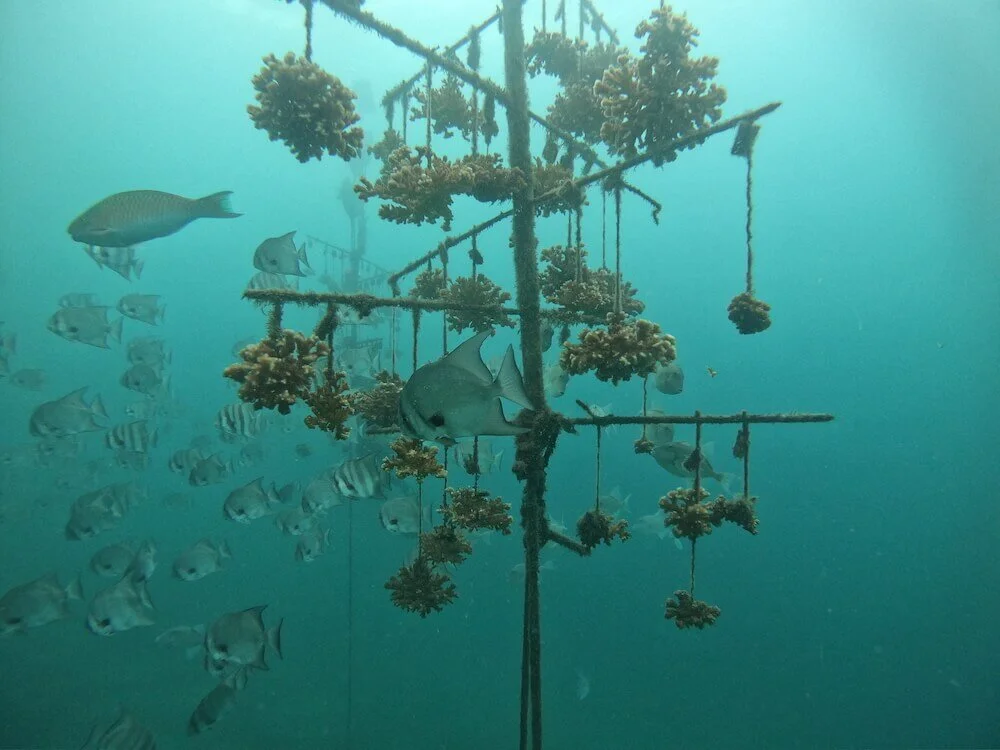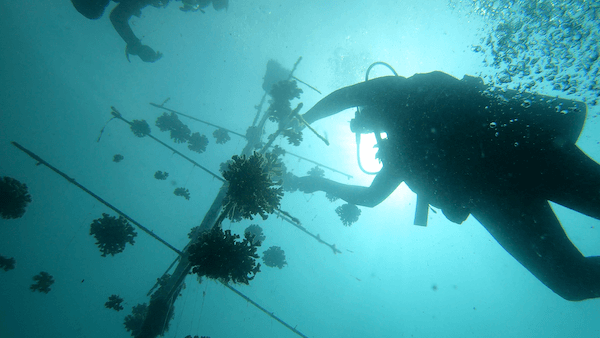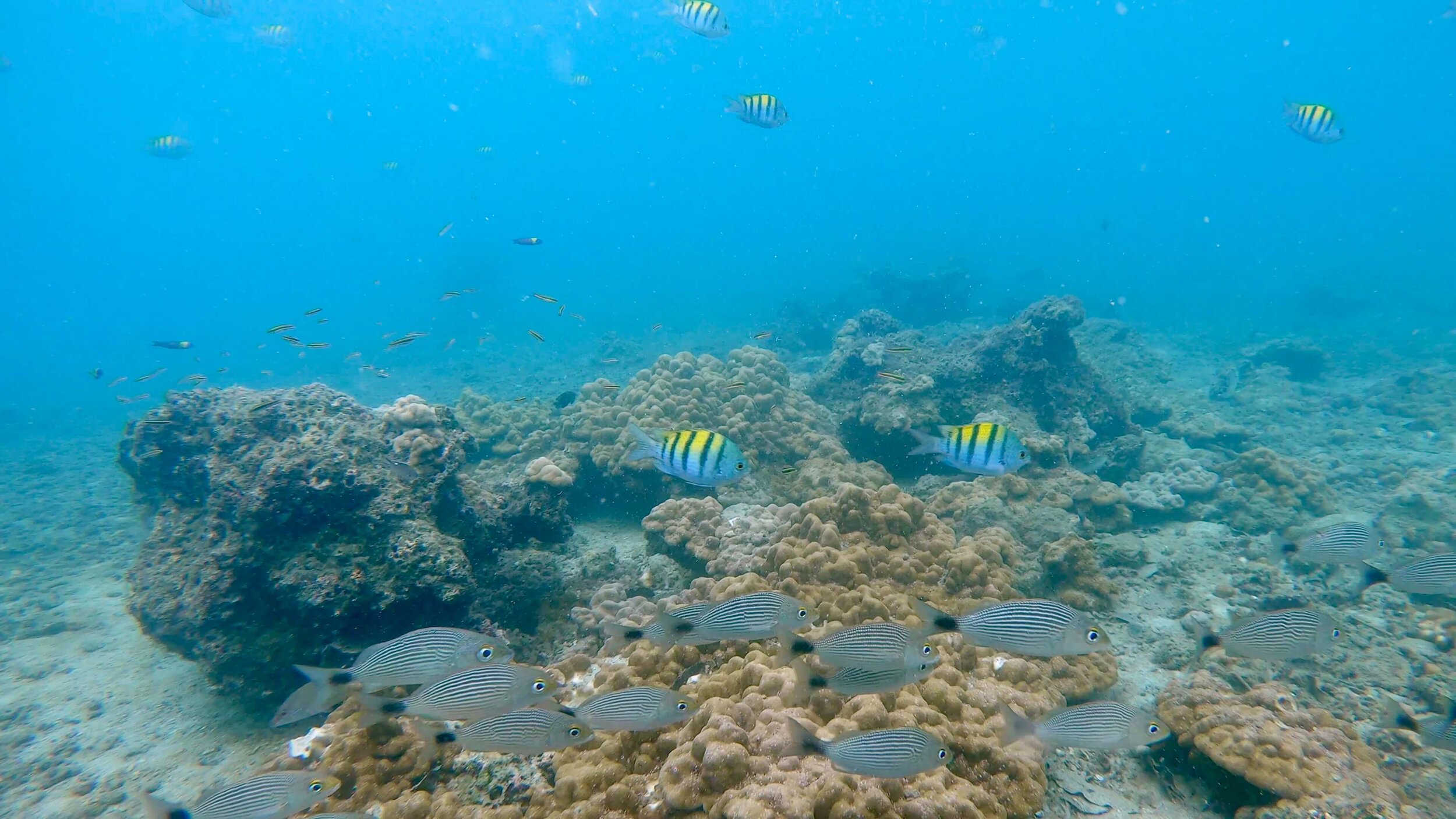
Snorkelling in Golfo Dulce
The rich biodiversity found in our surrounding rainforests is closely mirrored by the amount of life teeming below the surface of Golfo Dulce. Corals reefs - colonies of animals related to sea anemones and jellyfish - form one of the most diverse and complex ecosystems on our planet, providing invaluable shelter, food and nursery habitats to more than a quarter of all marine species at some point in their life cycle. On the Pacific coast of Costa Rica, the largest reef developments are found in the south, with Golfo Dulce hosting the most corals, surpassed only by Caño island (find out more here). During our snorkelling excursion, you will be able to see lobe coral (Porites lobata), cauliflower coral (Pocillopora damicornis), Psammocora stellata and Pavona laticlavius intricately sharing the shallow coastal waters with several species of eels, pufferfish, angelfish, starfish, large schools of snappers and Panamic sergeant major. With some luck, you will also encounter rays and the endangered hawksbill turtle. Because of local turbidity at times of the year, our reefs are generally found at no more than 10 m depth, making it ideal for snorkelers to explore, but please keep in mind that the months of December through to March enjoy the best underwater visibility.
If you choose to snorkel, please ensure you only apply mineral-based sunscreens, as sunscreen chemicals, especially oxybenzone, is very harmful to corals (we also stock natural sunscreen made in Costa Rica for purchase) . Also remember that simply touching corals can kill them, and even if not visibly harmed, oils and bacteria from your skin can leave them vulnerable to disease and bleaching.

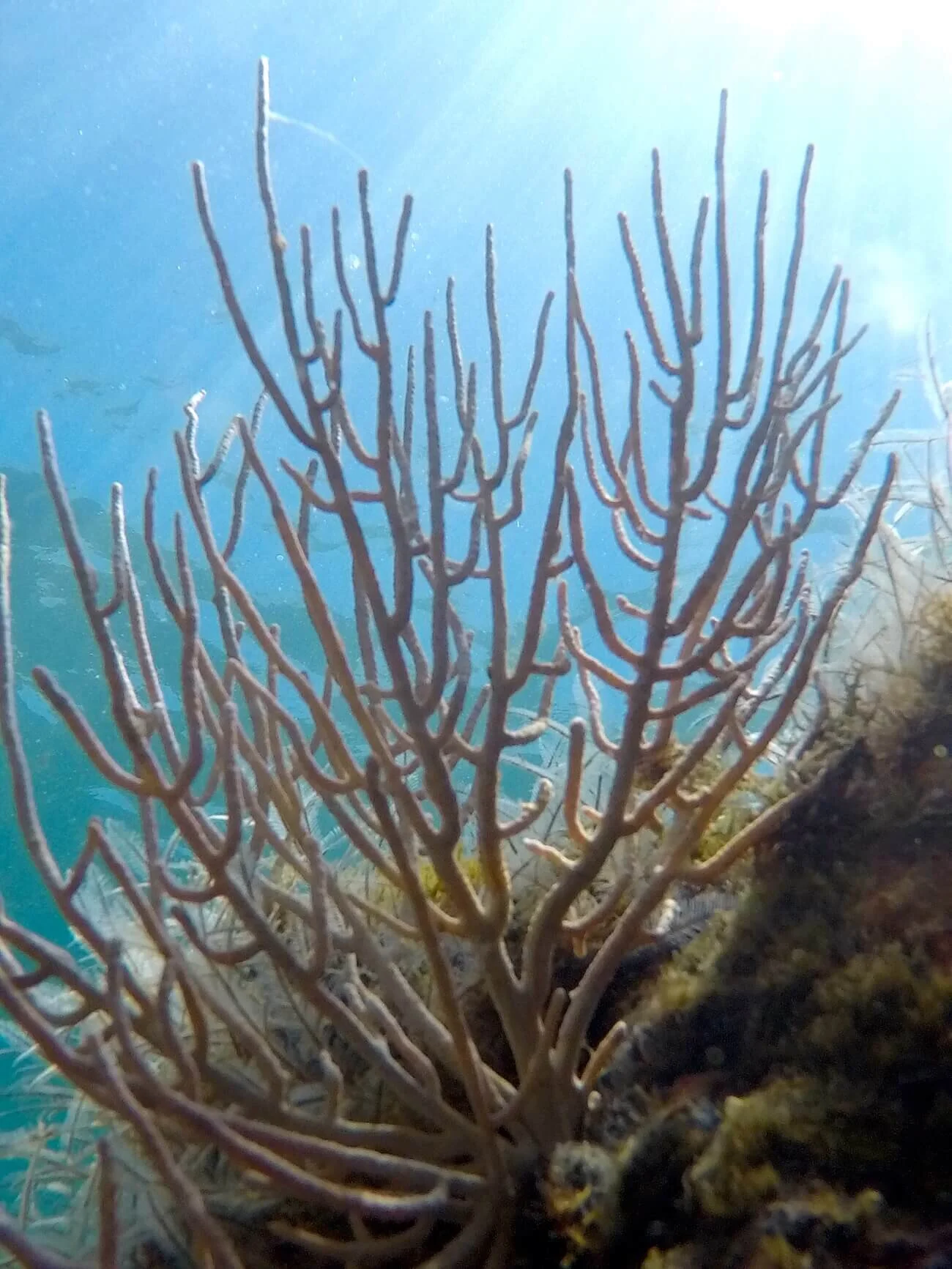
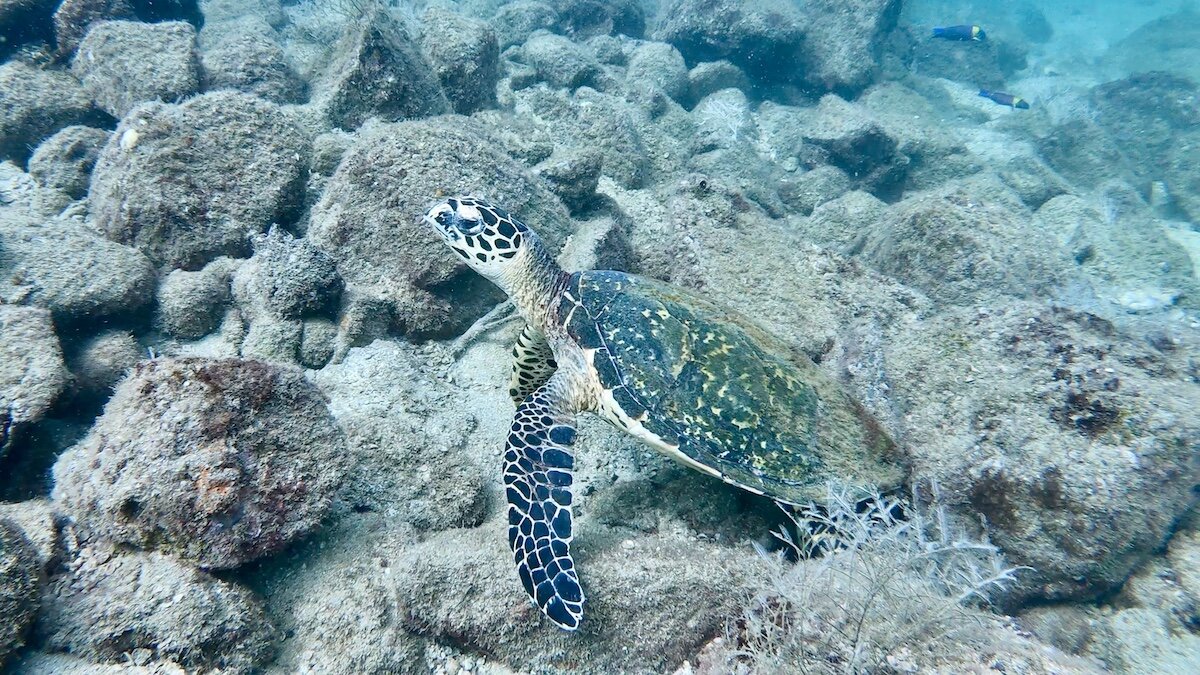
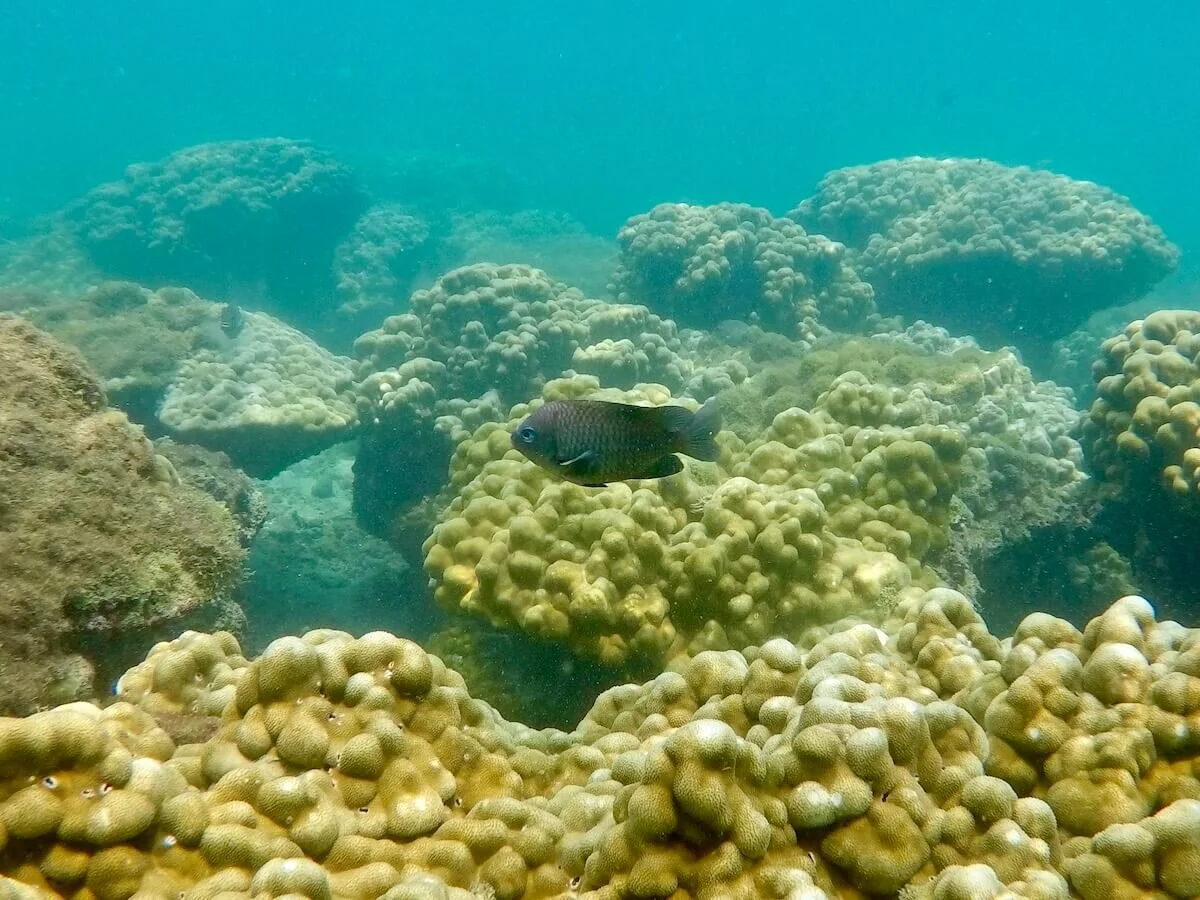
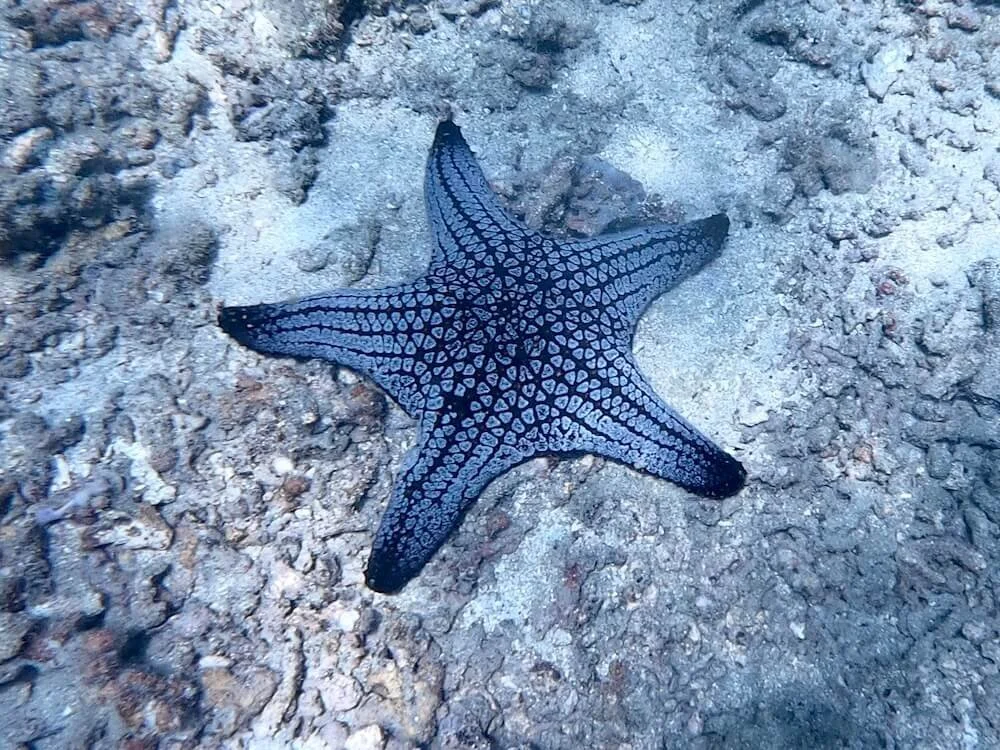
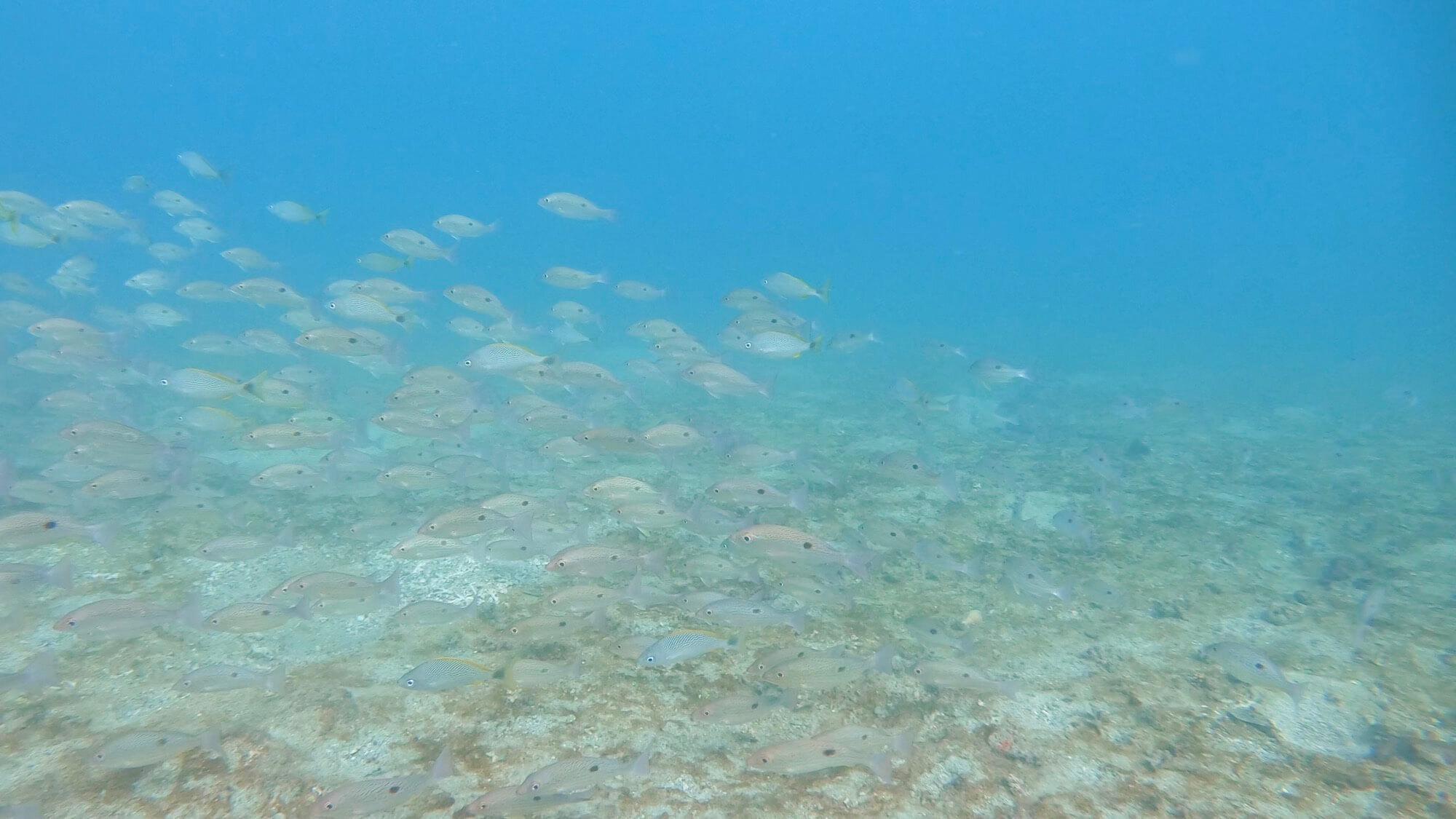
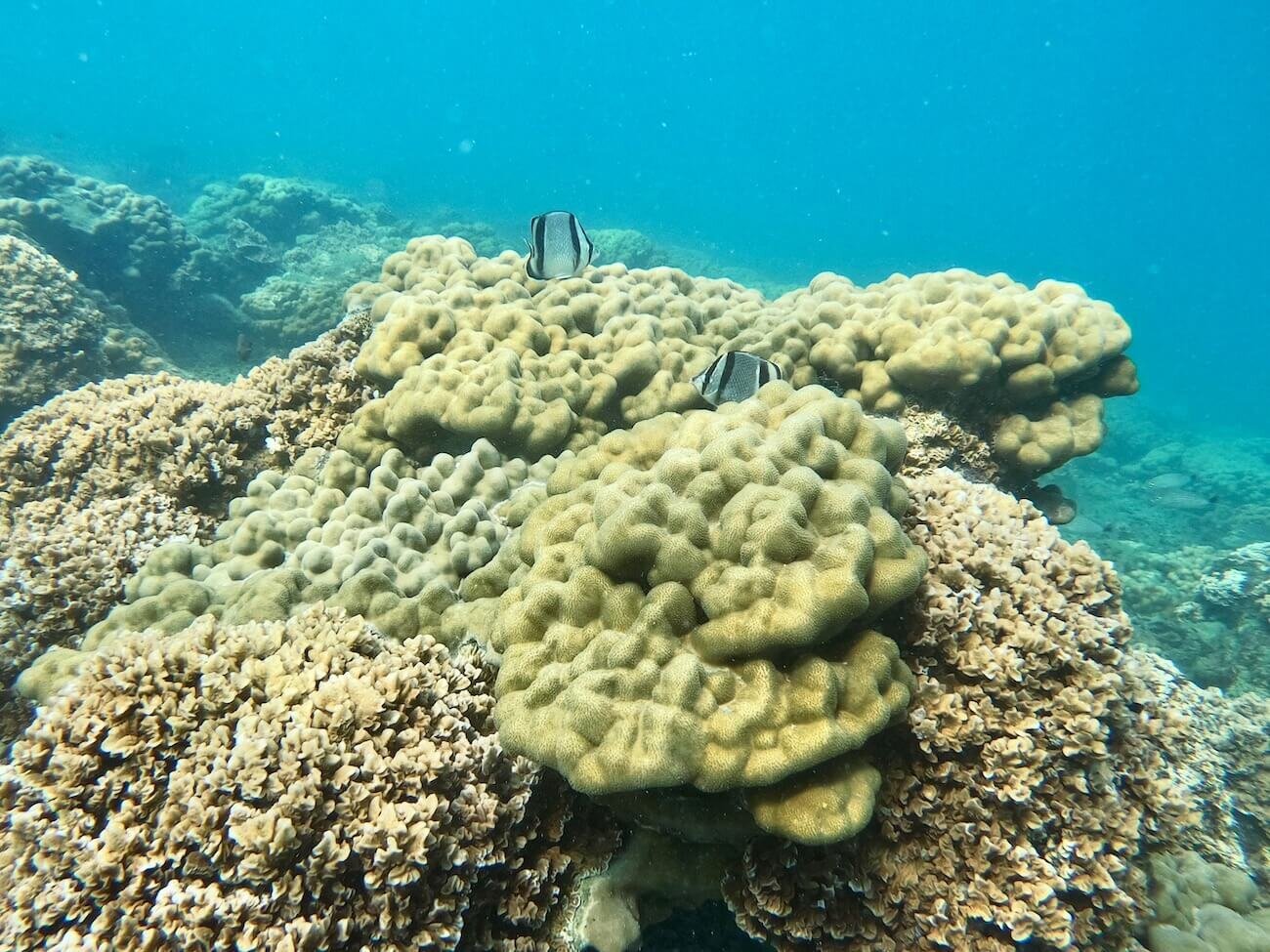
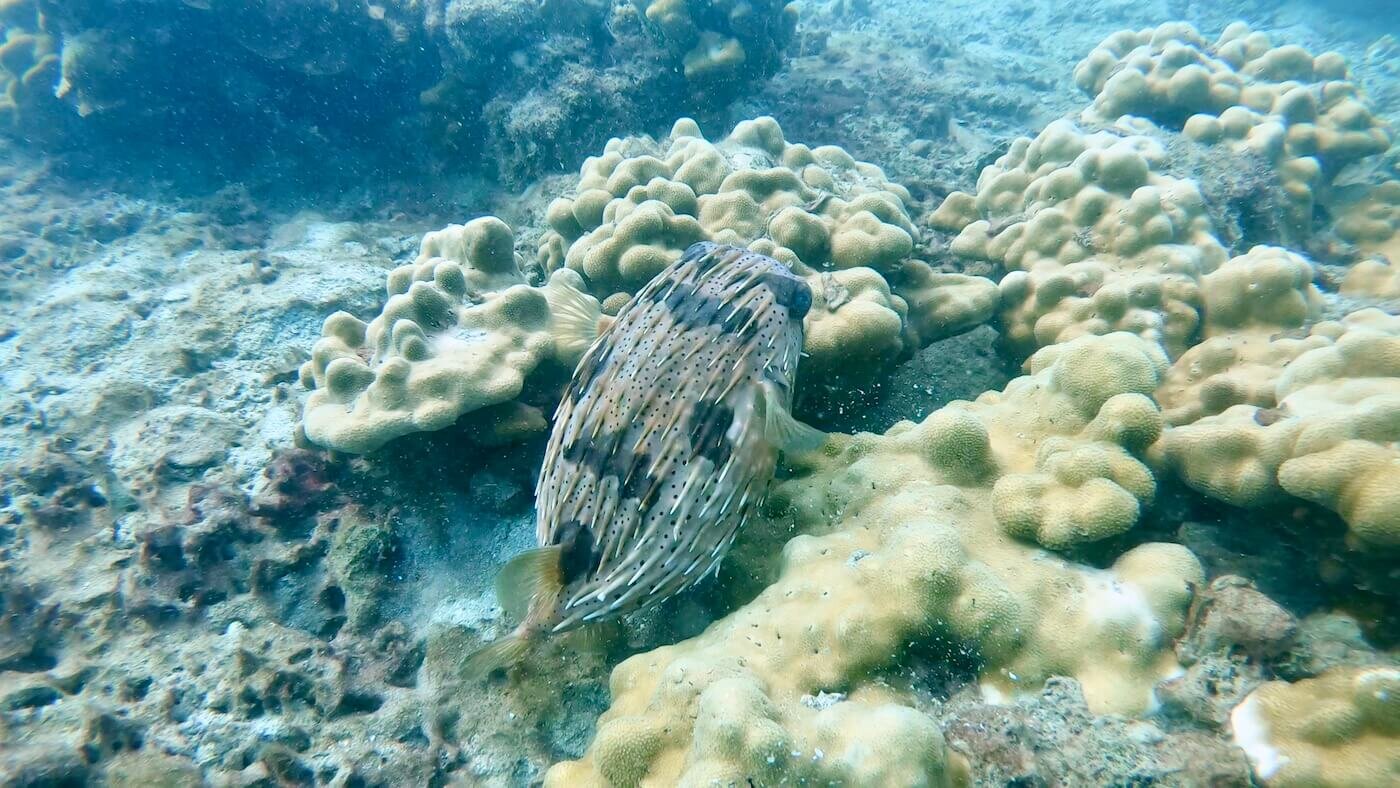
Helping the Coral Reefs of Golfo Dulce
For millennia, the growth of coral reefs within Golfo Dulce has been mainly affected by the El Niño–Southern Oscillation, a climate pattern that results in the periodic warming of surface waters in the eastern tropical Pacific, impacting ocean currents and rainfall. However, in the past few decades, it is human activity, especially deforestation and agricultural run offs, that has contributed to the decline of corals.
Raising Corals, founded by marine scientist Joanie Kleypas, have been propagating corals within the gulf since 2016 with the help of local conservation organisation Osa Conservation. Microfragments of healthy corals are grown in an underwater nursery located just a short boat-ride from Golfo Dulce Retreat: the growing corals are looked after regularly by dedicated scuba divers, and after about six to ten months, they are ready to be replanted onto reefs, supporting the restoration of depleted ecosystems. More importantly, Joanie and her team believe that coral species in Golfo Dulce, exposed to constant changes in salinity, temperature and acidity of the gulf, may be particularly resilient to climate change and might even hold the key to large-scale coral restoration further afield, as coral bleaching events increase in frequency across the world and coral reefs are lost at alarming rates due to global heating and sea acidification (refer to this amazing article if you’d like to find out more about coral restoration in Golfo Dulce).
If you are interested in this project, we can show you where the coral nursery is located as part of the snorkelling excursion. Indeed on days of good visibility you will be able to see the coral trees from our boat. Our visiting naturalist will also share with you news of the latest work on corals and explain why coral reefs play such an essential role in the health of our oceans. At Golfo Dulce Retreat, we regularly host marine scientists and divers from Raising Corals and Osa Conservation and participate in coral nursery maintenance dives ourselves, so you might even get to meet the fantastic people who are making a real difference in Golfo Dulce and beyond!

